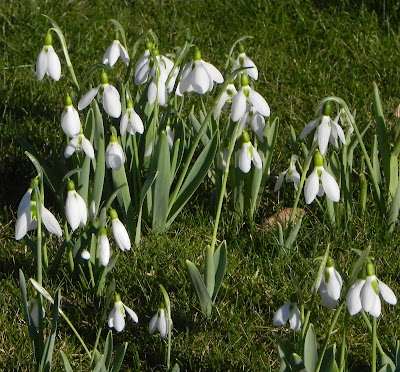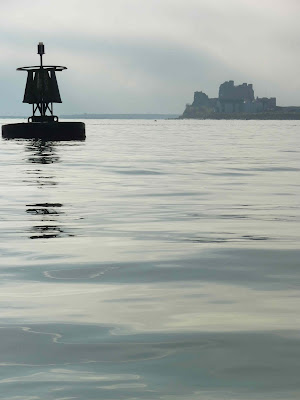Imbolc is the festival that falls half-way between the Winter Solstice (Yule) and the Spring Equinox (Ostara). Imbolc has existed for centuries until it was renamed Candlemas by the Christians. Traditionally it is celebrated on 1-2 February but, as usual with these festivals, nobody minds if the celebrations are extended a few days on either side.
Imbolc is not Spring, but it may be the herald of Spring. We may expect to see the first catkins dangling in thin sunshine, and the first snowdrops in bloom.
Above all, it marks a noticeable lengthening of the daylight, the time when thoughts turn to cleaning agricultural tools, sewing early seeds and checking if the pregnant ewes are safely through the worst of winter.
This year I was honoured to have my Australian
friend and fellow blogger Badger*,
(who presently lives in Vienna)
visit me in Maalie Court, Askam-in-Furness,
to share the Imbolc Festivities.
One of our Imbolc celebratory suppers.
Badger is speechless with amazement that an Englishman
can cook such an appetising looking pike pie
salt marsh, where boats are hauled up
into the creeks for the winter;
Or simply left to die.
Badger takes a stroll around the salt-marsh...
...and takes some 'arty-farty' pictures
of decaying boats
Badger steers us into the Queens Arms pub
for an Imbolc pint of Cumbria Ale.
Or was it two?
I find the first Snowdrops of the year in to time
to mark the Festival of Imbolc
A Very Happy Imbolc
to all my Readers
You may light any candle stubs left over from Yuletide
to keep the Ghosties away
*You may discover more about Badger and his blog here































